Abstract
OBJECTIVES--To investigate the hypothesis that hydrocarbon exposure is a risk factor for chronic pancreatitis. METHODS--102 cases of chronic pancreatitis and 204 age and sex matched referents were interviewed about their occupational histories, alcohol and cigarette consumption, and diet. Exposure to hydrocarbons was inferred from interview responses by four assessors who were blind to disease state, and these data were then summarised by a cumulative hydrocarbon exposure (CHE) score. RESULTS--After adjustment for alcohol, cigarettes, dietary antioxidants, and social class, odds ratios for low CHE scores were 1.20 (90% CI: 0.62-2.35) and 2.67 (90% CI: 1.22-5.87) for high scores. A test for trend with level of exposure among only those who had exposure scores > 0 gave p = 0.09. Analysis by type of hydrocarbon was limited to four exposures for each of which there were at least 20 exposed patients. The adjusted OR for paint solvents (any level) was 0.96 (90% CI: 0.48-1.93); for diesel exhaust fumes OR = 2.66 (90% CI: 1.05-6.73); for petrochemicals OR = 1.82 (90% CI: 0.80-4.11); and for chlorinated solvents OR = 1.49 (90% CI: 0.58-3.81). CONCLUSIONS--These results support the original hypothesis. Further studies are needed to confirm or refute the findings here and to clarify the types of hydrocarbon involved.
Full text
PDF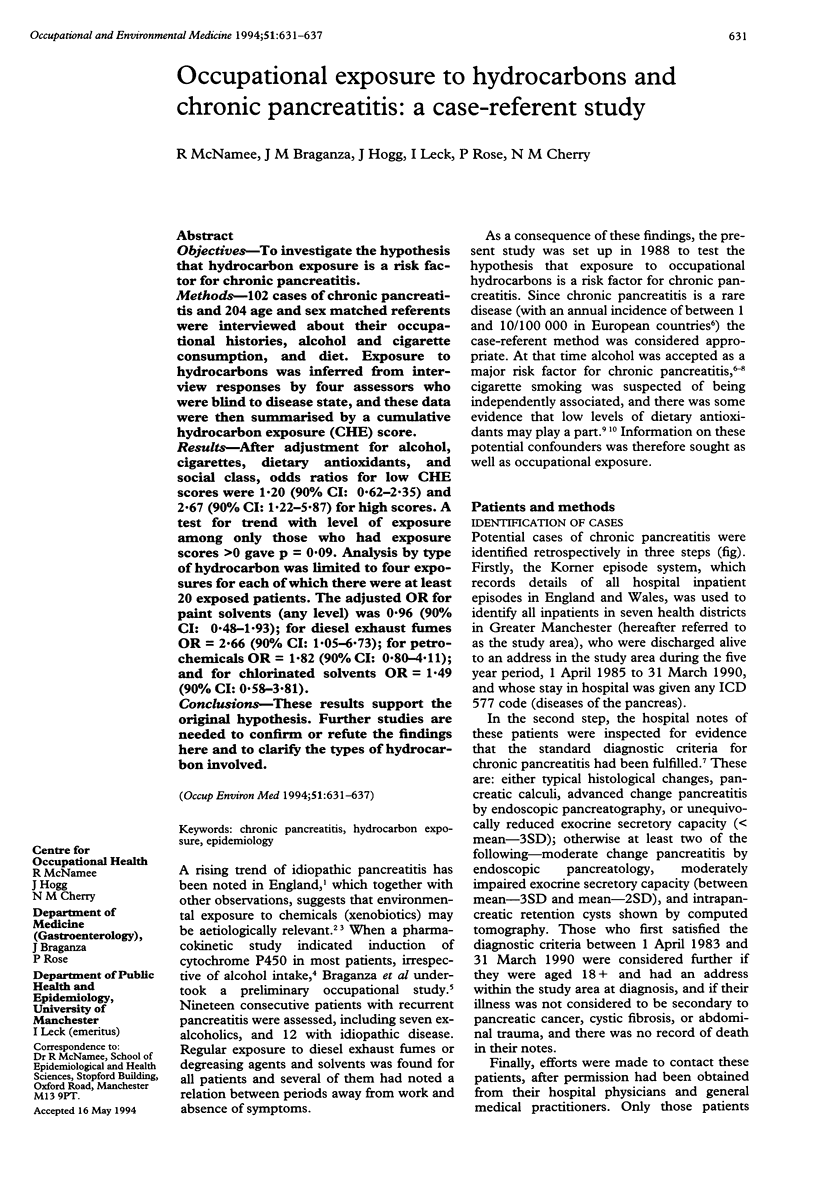
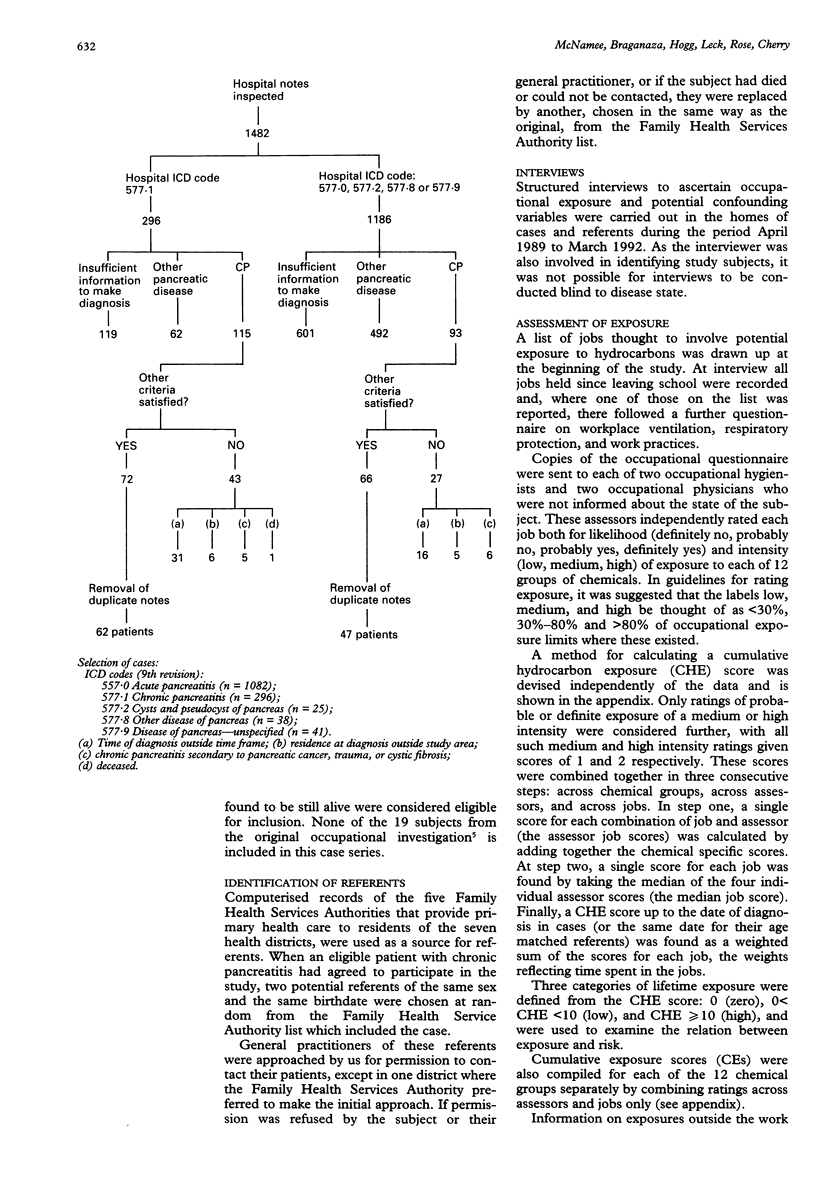


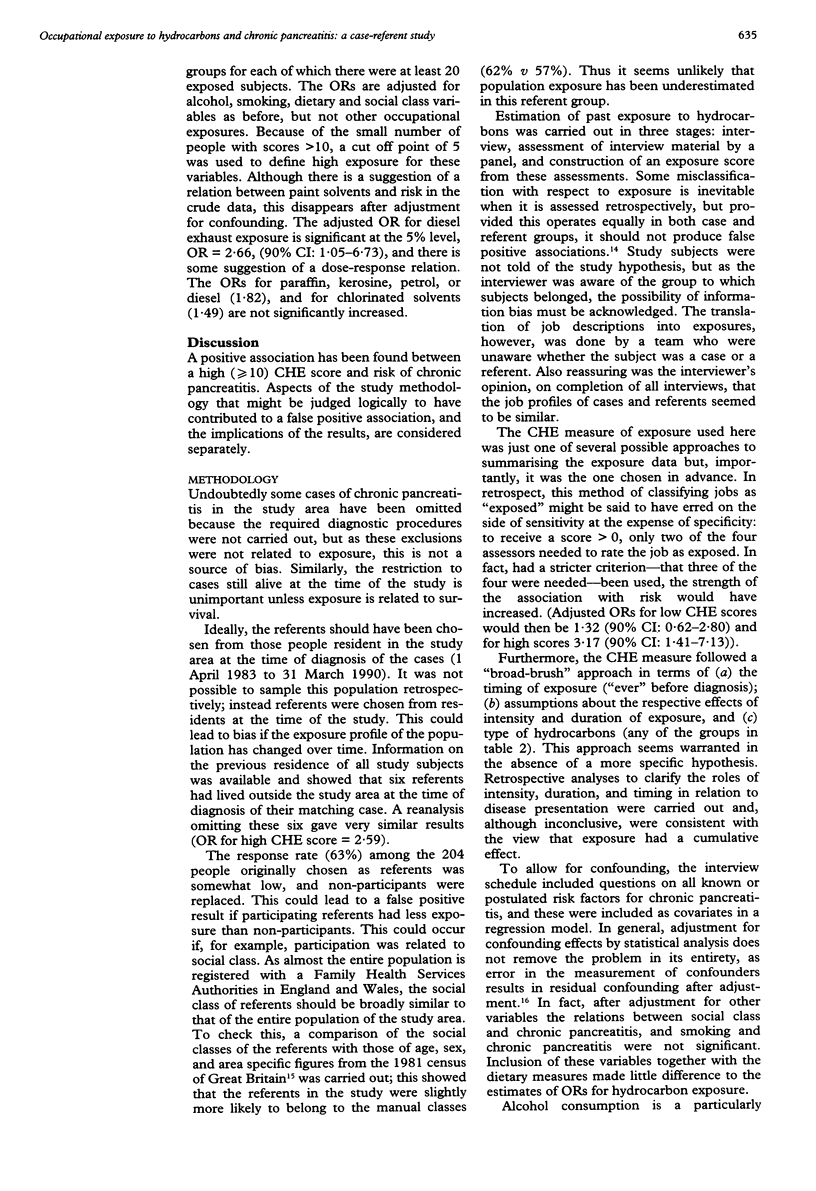
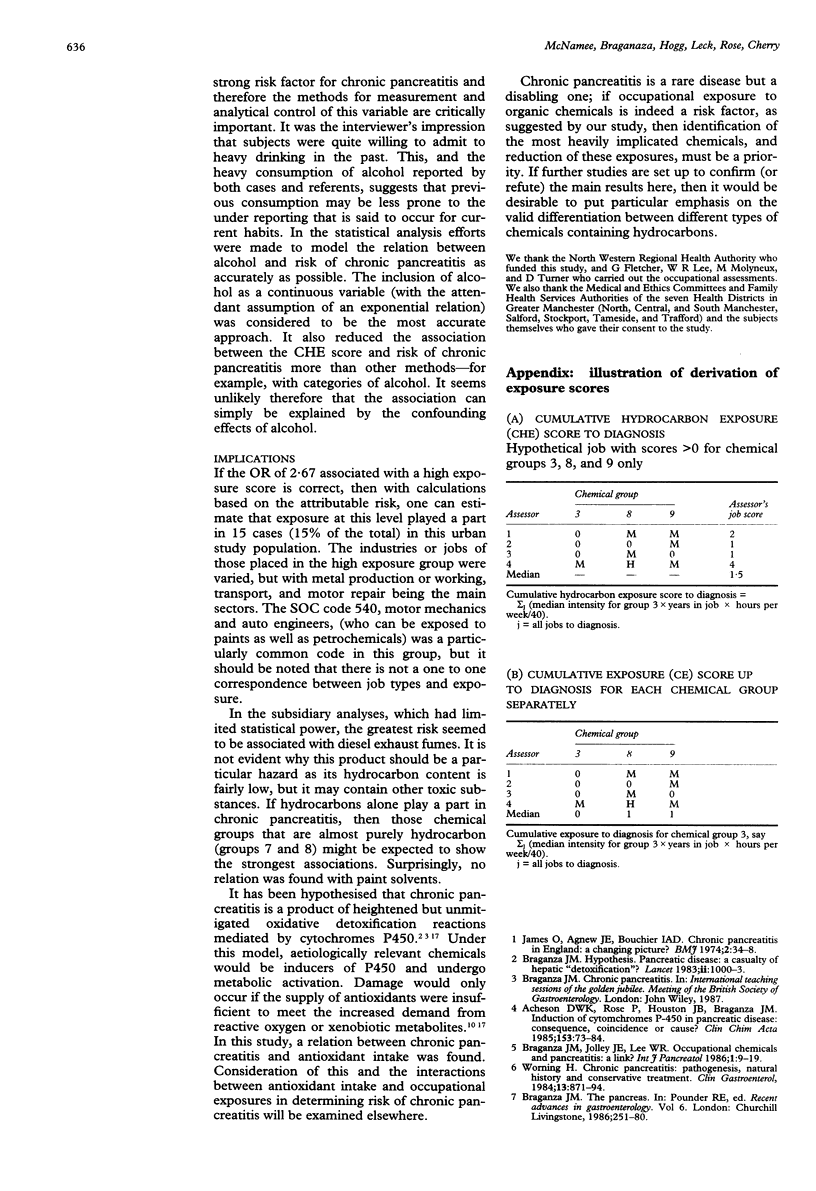
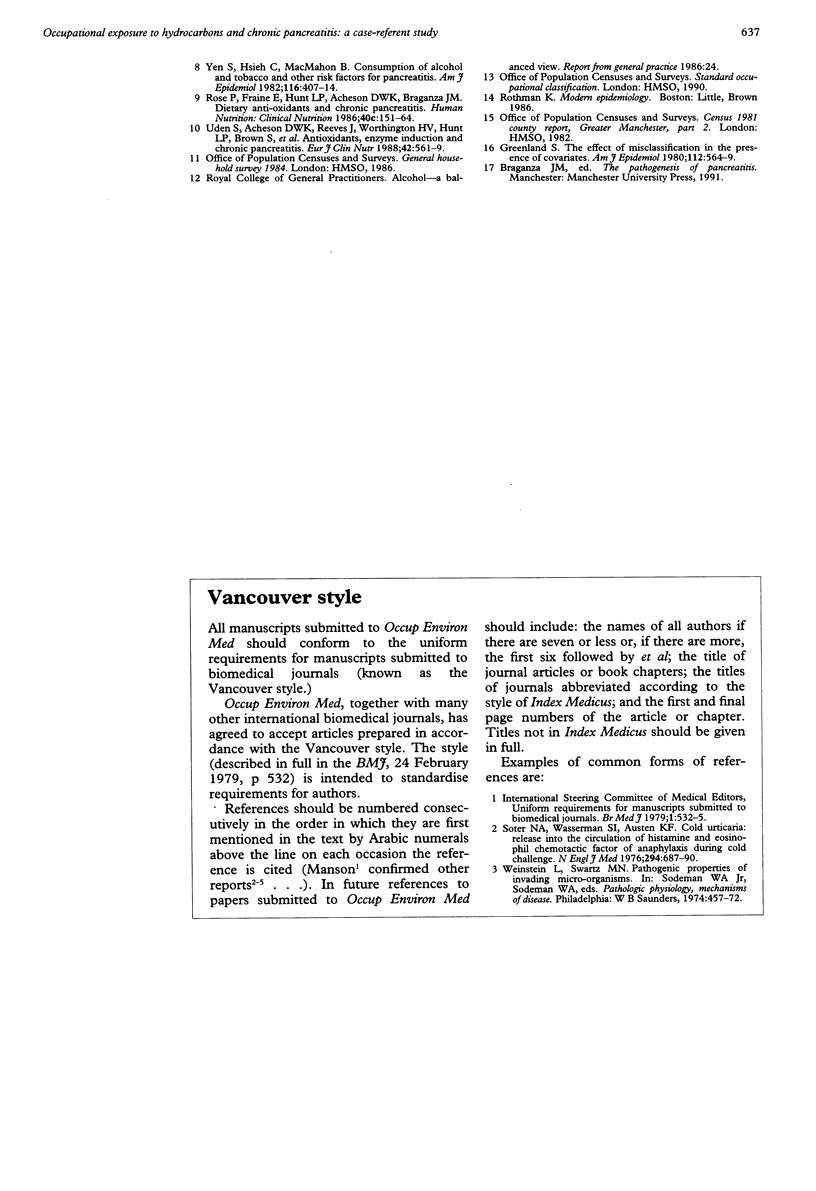
Selected References
These references are in PubMed. This may not be the complete list of references from this article.
- Braganza J. M., Jolley J. E., Lee W. R. Occupational chemicals and pancreatitis: a link? Int J Pancreatol. 1986 May;1(1):9–19. doi: 10.1007/BF02795235. [DOI] [PubMed] [Google Scholar]
- Braganza J. M. Pancreatic disease: a casualty of hepatic "detoxification"? Lancet. 1983 Oct 29;2(8357):1000–1003. doi: 10.1016/s0140-6736(83)90983-2. [DOI] [PubMed] [Google Scholar]
- Greenland S. The effect of misclassification in the presence of covariates. Am J Epidemiol. 1980 Oct;112(4):564–569. doi: 10.1093/oxfordjournals.aje.a113025. [DOI] [PubMed] [Google Scholar]
- James O., Agnew J. E., Bouchier I. A. Chronic pancreatitis in England: a changing picture? Br Med J. 1974 Apr 6;2(5909):34–38. doi: 10.1136/bmj.2.5909.34. [DOI] [PMC free article] [PubMed] [Google Scholar]
- Rose P., Fraine E., Hunt L. P., Acheson D. W., Braganza J. M. Dietary antioxidants and chronic pancreatitis. Hum Nutr Clin Nutr. 1986 Mar;40(2):151–164. [PubMed] [Google Scholar]
- Uden S., Acheson D. W., Reeves J., Worthington H. V., Hunt L. P., Brown S., Braganza J. M. Antioxidants, enzyme induction, and chronic pancreatitis: a reappraisal following studies in patients on anticonvulsants. Eur J Clin Nutr. 1988 Jul;42(7):561–569. [PubMed] [Google Scholar]
- Worning H. Chronic pancreatitis: pathogenesis, natural history and conservative treatment. Clin Gastroenterol. 1984 Sep;13(3):871–894. [PubMed] [Google Scholar]
- Yen S., Hsieh C. C., MacMahon B. Consumption of alcohol and tobacco and other risk factors for pancreatitis. Am J Epidemiol. 1982 Sep;116(3):407–414. doi: 10.1093/oxfordjournals.aje.a113425. [DOI] [PubMed] [Google Scholar]


